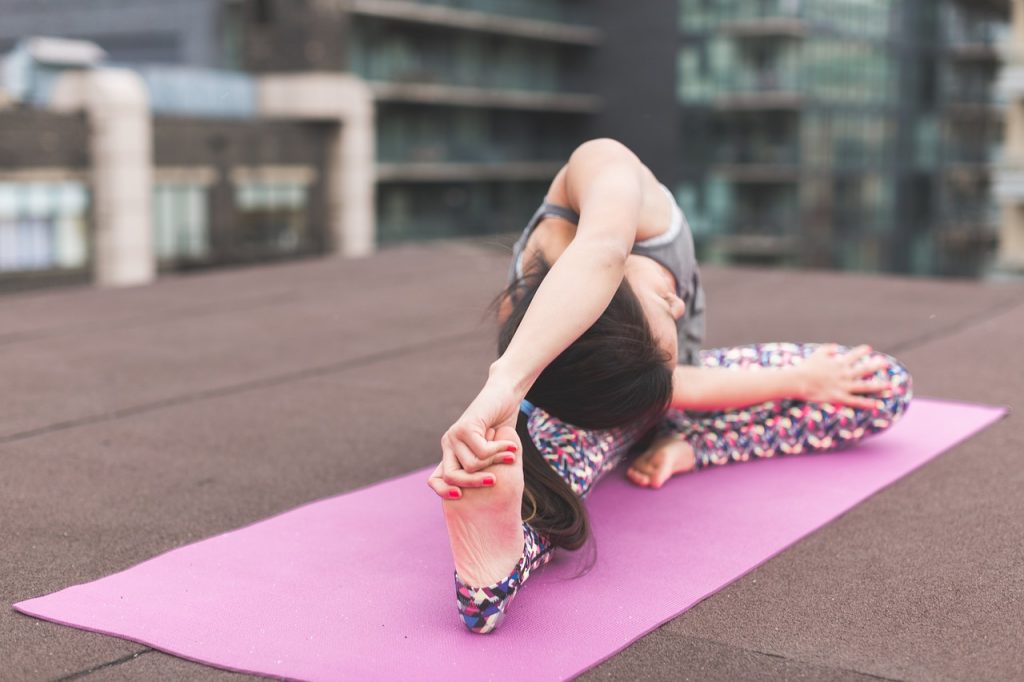What Is The Sciatic Nerve?
Sciatic nerve pain can be so excruciating and debilitating that you don’t even want to get off the couch. Common causes of sciatica can include a ruptured disk, a narrowing of the spinal canal (called spinal stenosis), and injury.

Sciatica pain can occur for a variety of reasons and identifying what doesn’t move is the first step toward solving the problem. Often, the most problematic body parts are the lower back and hips. The best way to alleviate most sciatica pain is to do any stretch that can externally rotate the hip to provide some relief.
Here are five exercises that do just that:
- reclining pigeon pose
- sitting pigeon pose
- forward pigeon pose
- knee to opposite shoulder
- sitting spinal stretch
Reclining Pigeon Pose
Pigeon Pose is a common yoga pose. It works to open the hips. There are multiple versions of this stretch. The first is a starting version known as the reclining pigeon pose. If you are just starting your treatment, you should try the reclining pose first.
- While on your back, bring your right leg up to a right angle. Clasp both hands behind the thigh, locking your fingers.
- Lift your left leg and place your right ankle on top of the left knee.
- Hold the position for a moment. This helps stretch the tiny piriformis muscle, which sometimes becomes inflamed and presses against the sciatic nerve, causing pain.
- Do the same exercise with the other leg.
Once you can do the reclining version without pain, work on the sitting and forward versions of pigeon pose.
Sitting Pigeon Pose
Sit on the floor with your legs stretched out straight in front of you.
Bend your right leg, putting your right ankle on top of the left knee.
Lean forward and allow your upper body to reach toward your thigh.
Hold for 15 to 30 seconds. This stretches the glutes and lower back.
Repeat on the other side.
Forward Pigeon Pose
- Kneel on the floor on all fours.
- Pick up your right leg and move it forward on the ground in front of your body. Your lower leg should be on the ground, horizontal to the body. Your right foot should be in front of your right knee while your right knee stays to the right.
- Stretch the left leg out all the way behind you on the floor, with the top of the foot on the ground and toes pointing back.
- Shift your body weight gradually from your arms to your legs so that your legs are supporting your weight. Sit up straight with your hands on either side of your legs.
- Take a deep breath. While exhaling, lean your upper body forward over your front leg. Support your weight with your arms as much as possible.
Repeat on the other side.
Knee To Opposite Shoulder
- This simple stretch helps relieve sciatica pain by loosening your gluteal and piriformis muscles, which can become inflamed and press against the sciatic nerve.
- Lie on your back with your legs extended and your feet flexed upward.
- Bend your right leg and clasp your hands around the knee.
- Gently pull your right leg across your body toward your left shoulder. Hold it there for 30 seconds. Remember to pull your knee only as far as it will comfortably go. You should feel a relieving stretch in your muscle, not pain.
- Push your knee so your leg returns to its starting position.
Repeat for a total of 3 reps, and then switch legs.
Sitting Spinal Stretch
Sciatica pain is triggered when vertebrae in the spine compress. This stretch helps create space in the spine to relieve pressure on the sciatic nerve.
- Sit on the ground with your legs extended straight out with your feet flexed upward.
- Bend your right knee and place your foot flat on the floor on the outside of your opposite knee.
- Place your left elbow on the outside of your right knee to help you gently turn your body toward the right.
Hold for 30 seconds and repeat three times, then switch sides.
At Endpoint Wellness, we help with the recovery of sciatica pain.

